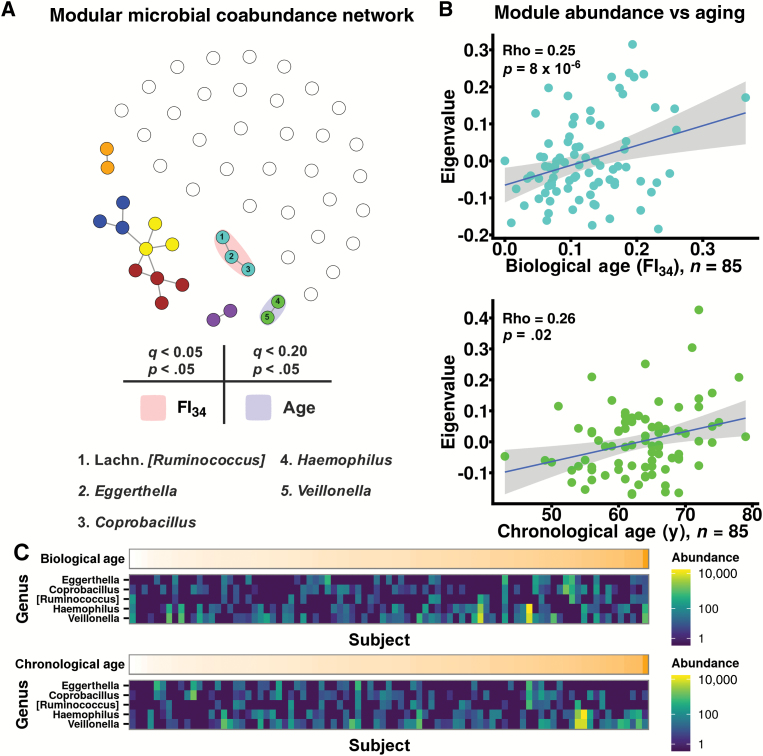Figure 4.
FI34 score correlates with the abundance of a microbial coabundance module. Genus-level OTUs were filtered for prevalence in at least 25% of subjects and normalized by DESeq2 variance-stabilizing transformation. Correlation coefficients were calculated between all pairs of genera using the Sparse Inverse Covariance Estimation for Ecological Association and Statistical Inference (SPIEC-EASI) algorithm. Positive correlation coefficients were retained for downstream analysis. (A) A microbial coabundance network consisting of positively coabundant genera is plotted. Vertices or points represent a single OTU genus. Edges or lines emanating from nodes connect significantly coabundant genera as inferred by SPIEC-EASI. Relative point positions were plotted according to the competing strengths of their coabundance correlations (Fruchtermann–Reingold projection). Points with similar connectivity were grouped into a module (indicated by color) using Weighted Gene Co-expression Network Analysis (WGCNA). Genera lacking significant coabundance are plotted as empty, white points. Module abundances that correlated with FI34 score or chronological age following correction for clinical and technical confounding (p < .05) and false-discovery rate (FDR; q < 0.05 and q < 0.20) are highlighted in red or blue, respectively. (B) Turquoise and green module abundances (eigenvalue) are plotted against FI34 score or chronological age with respective Spearman rho correlation statistics and p values corrected for clinical and technical confounding. Linear best-fit lines are plotted in blue with shaded 95% confidence intervals. (C) DESeq2-normalized abundances of turquoise and green module OTUs are expressed as heatmaps. OTU abundances are sorted along the x-axis by increasing FI34 score (top panel) or chronological age (bottom panel). Supplementary Figures 6 and 7 contain expanded heatmaps of all modules and member genera sorted by increasing FI34 score or chronological age, respectively.

